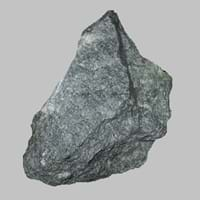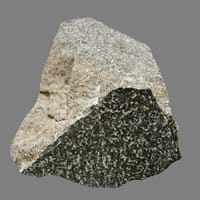Definition
It is a metamorphic magnesium rich rock because it is composed of the mineral talc
Diabase is a fine-grained igneous rock which is composed mostly of pyroxene and feldspar
Discoverer
Unknown
Christian Leopold von Buch
Etymology
From 17th century, because of its greasy feel and use like a soap
From Greek di + base
Class
Metamorphic Rocks
Igneous Rocks
Sub-Class
Durable Rock, Soft Rock
Durable Rock, Hard Rock
Group
Not Applicable
Volcanic
Other Categories
Fine Grained Rock, Opaque Rock
Fine Grained Rock, Medium Grained Rock, Opaque Rock
Texture
Polished
Aphanitic, Granular
Color
Black, Black to Grey, Green, Grey
Dark Grey to Black
Durability
Durable
Durable
Appearance
Dull, Banded and Foilated
Vesicular
Interior Uses
Bathrooms, Decorative Aggregates, Homes, Interior Decoration
Countertops, Decorative Aggregates, Homes, Interior Decoration, Kitchens
Exterior Uses
As Facing Stone, Garden Decoration
As Building Stone, As Facing Stone, Paving Stone, Garden Decoration, Office Buildings
Other Architectural Uses
Curbing
Curbing
Construction Industry
Manufacture of Magnesium and Dolomite Refractories
As Dimension Stone, Building houses or walls, Cement Manufacture, Construction Aggregate, for Road Aggregate
Medical Industry
Taken as a Supplement for Calcium or Magnesium
Not Yet Used
Antiquity Uses
Artifacts, Jewellery, Monuments, Sculpture
Artifacts, Monuments, Sculpture, Small Figurines
Commercial Uses
Cemetery Markers, Creating Artwork, Gemstone, Jewelry, Manufacture of Soap, Solvents, Dyes, Plastics and Fibres, Production of Lime, Source of Magnesia (MgO)
An Oil and Gas Reservoir, Cemetery Markers, Commemorative Tablets, Laboratory bench tops, Jewelry, Sea Defence, Tombstones
Types
Not Available
Not Available
Features
Host Rock for Lead
Smooth to touch
Archaeological Significance
Famous Monuments
Christ the Redeemer in Rio de Janeiro, Stonehenge in English county of Wiltshire
Stonehenge in English county of Wiltshire
Famous Sculptures
Data Not Available
Data Not Available
Pictographs
Used
Not Used
Petroglyphs
Used
Not Used
Formation
Soapstone is a talc-schist, which is a type of metamorphic rock and it is largely composed of the mineral talc and is thus rich inmagnesium.
Diabase forms when molten igneous rock is squeezed up into a vertical crack in other rocks, the crack is usually forced apart and the molten rock cools in the space to form a tabular igneous intrusion cutting across the surrounding rocks and is known as a dike.
Mineral Content
Albite, Apatite, Biotite, Calcite, Carbonate, Clay Minerals, Hornblende, Ilmenite, Micas, Plagioclase, Pyroxene, Quartz
Augite, Chlorite, Olivine, Plagioclase, Pyroxene, Pyrrhotite, Serpentine
Compound Content
CaO, Mg, MgO
Aluminium Oxide, CaO, Chromium(III) Oxide, Iron(III) Oxide, Potassium Oxide, MgO, Sodium Oxide, Silicon Dioxide, Sulfur Trioxide
Types of Metamorphism
Burial Metamorphism, Cataclastic Metamorphism, Contact Metamorphism, Hydrothermal Metamorphism, Impact Metamorphism, Regional Metamorphism
Burial Metamorphism, Cataclastic Metamorphism, Contact Metamorphism, Regional Metamorphism
Types of Weathering
Not Applicable
Biological Weathering, Chemical Weathering
Types of Erosion
Not Applicable
Chemical Erosion, Coastal Erosion, Water Erosion
Grain Size
Fine Grained
Fine to Medium Grained
Fracture
Conchoidal
Conchoidal
Porosity
Less Porous
Highly Porous
Luster
Greasy
Not Available
Cleavage
Perfect
Not Available
Specific Gravity
2.86
2.86-2.87
Transparency
Opaque
Opaque
Density
2.8-2.9 g/cm3
2.7-3.3 g/cm3
Specific Heat Capacity
Not Available
Resistance
Heat Resistant, Pressure Resistant
Heat Resistant, Impact Resistant, Pressure Resistant, Wear Resistant
Deposits in Eastern Continents
Asia
China, India, Indonesia, Japan, North Korea, Russia, Saudi Arabia, Singapore, South Korea, Sri Lanka, Tajikistan, Thailand
India
Africa
Egypt, Ethiopia, Ghana, South Africa, Western Africa
South Africa, Tanzania
Europe
Austria, England, Finland, France, Germany, Greece, Spain, Sweden, Switzerland, United Kingdom
Germany, Greece, Italy, Scotland, Turkey
Others
Not Yet Found
Antarctica, Greenland
Deposits in Western Continents
North America
Canada, USA
Canada, USA
South America
Colombia
Argentina, Brazil, Colombia, Venezuela
Deposits in Oceania Continent
Australia
Central Australia, New Zealand, Queensland
Central Australia, New Zealand, Queensland, Western Australia
All about Soapstone and Diabase Properties
Know all about Soapstone and Diabase properties here. All properties of rocks are important as they define the type of rock and its application. Soapstone belongs to Metamorphic Rocks while Diabase belongs to Igneous Rocks.Texture of Soapstone is Polished whereas that of Diabase is Aphanitic, Granular. Soapstone appears Dull, Banded and Foilated and Diabase appears Vesicular. The luster of Soapstone is greasy while that of Diabase is not available. Soapstone is available in black, black to grey, green, grey colors whereas Diabase is available in dark grey to black colors. The commercial uses of Soapstone are cemetery markers, creating artwork, gemstone, jewelry, manufacture of soap, solvents, dyes, plastics and fibres, production of lime, source of magnesia (mgo) and that of Diabase are an oil and gas reservoir, cemetery markers, commemorative tablets, laboratory bench tops, jewelry, sea defence, tombstones.










